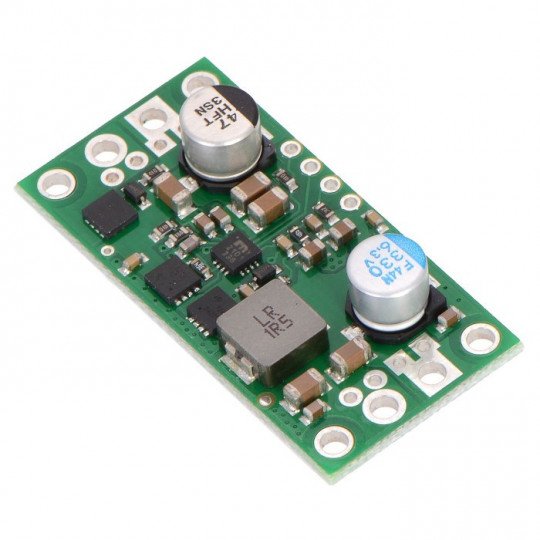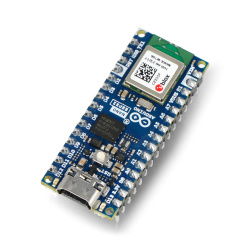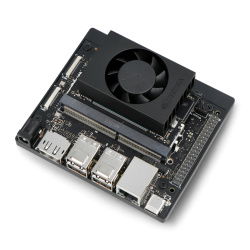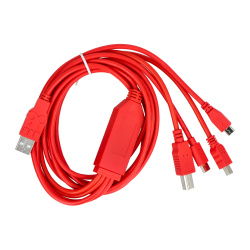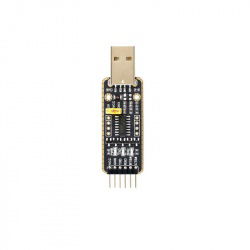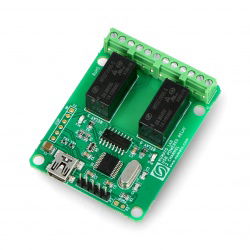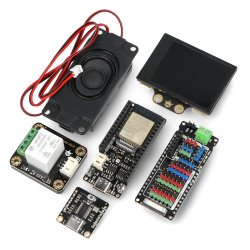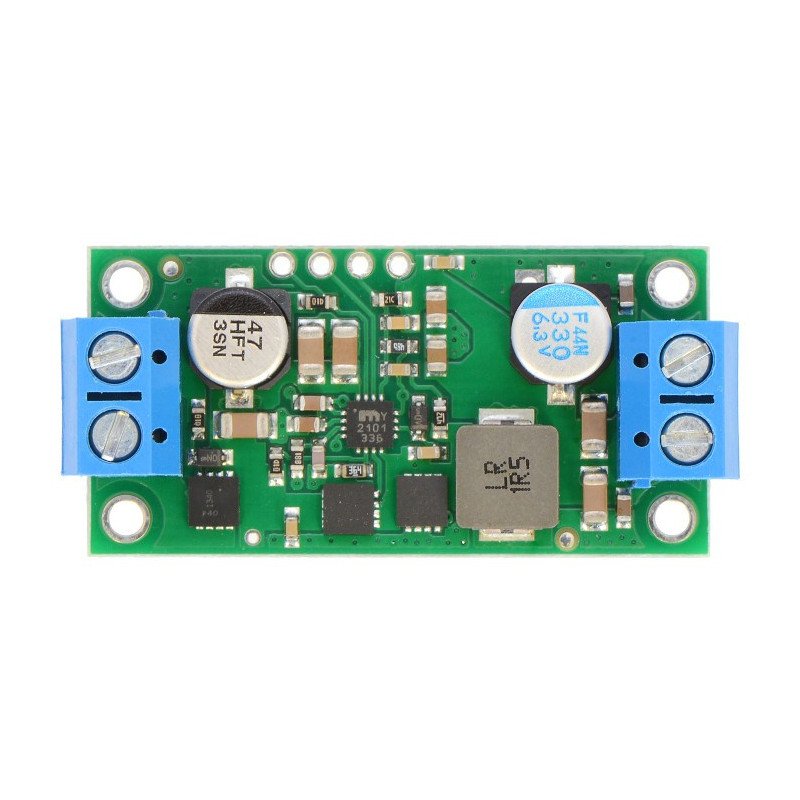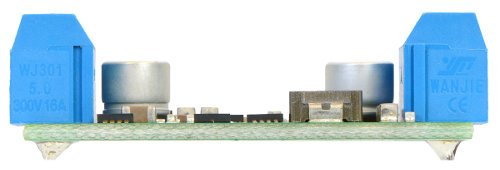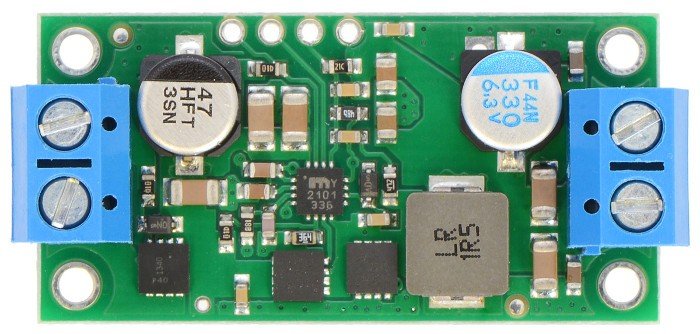- EOL
|
Attention! The product has been discontinued. Check others products incategory. |
Description: Pololu Step-Down Voltage Regulator D24V60F5 - 5V 6A
The pulse regulator DC-DC converts the input voltage from 5 V to 38 V to the output value 5 V. It allows for current consumption up to 6 A. The system is characterized by high efficiency at 80 % - 95 %. Using the ENABLE pin, the module can be switched into standby mode which consumes only 20 uA for each Volt of supply voltage.
In our offer is also availableversion high-power which allows for current consumption up to 9 A. Because both boards are very similar, the manufacturer has left on the back, the place where you can mark the chip with a marker.
Leads
The module has four leads:
- VIN- input voltage ranging from 5 V to 38 V.
- GND- the ground potential.
- VOUT- output voltage 5 V.
- ENABLE- inputting low state switches the system into the mode of low consumption of energy, where it consumes only 10 uA - 20 uA for every Volt of supply voltage. Pin, by default, is pulled up to VIN through a resistor of 100kΩ. If the low-power mode will not be used, ENABLEcan be left not connected.
- FB- soldering the resistor between FB and the VOUT, decreases the output voltage. Details in the remaining part of the description.
- PG- indicator "power good". Lead of open drain type switches to low state, when the output voltage falls below 90 % of the set value (i.e., below 4.5 V to 5 V).
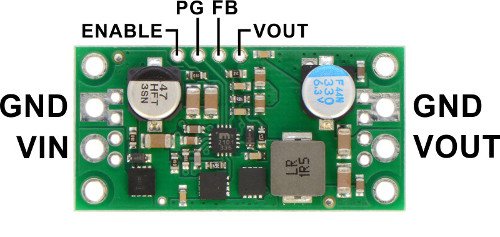 To the holes can be soldered populargoldpin strips, the pitch of the leads is 2.54 mm or screw ARK sockets. Both types of connectors are included in the package. The module can be mounted onthe breadboard, connected viawiresor put in a dedicated PCB.
To the holes can be soldered populargoldpin strips, the pitch of the leads is 2.54 mm or screw ARK sockets. Both types of connectors are included in the package. The module can be mounted onthe breadboard, connected viawiresor put in a dedicated PCB.
The decrease in the output voltage
The converter has the function of reducing the output voltage. For this, you need to solder the resistor between FB and the VOUT. Its value can be calculated using the formula:
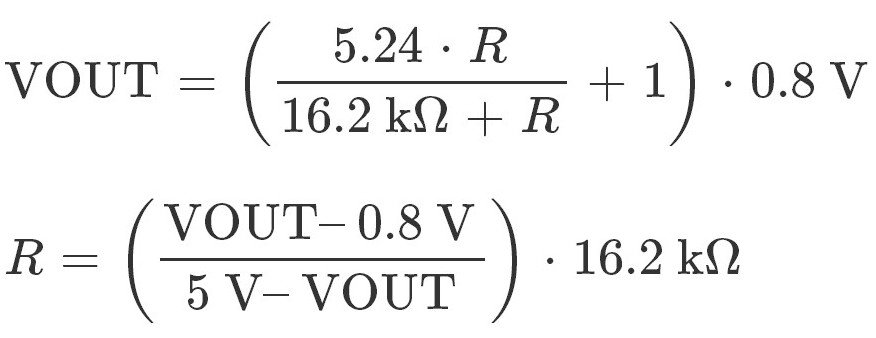
For example, to get the 3.3 V on the output, you need to solder the resistor 23.7kΩ. The output value can not be lower than 0.8 V.
Efficiency and output current
Efficiency is defined as the ratio of output power to input power (Power out)/(Power in). This is a very important parameter for working with portable energy sources (batteries and accumulators), where a working time on one cycle of charging matters. The dependence of the efficiency on the input voltage is given in the diagrams below.
Voltage drop-out
The graph below shows the dependence of the voltage drop-out from the value of the output current. For example, if the consumption is 5 A, the output voltage must be higher by 1 V than input value.
Switching frequency
The system operates at a frequency of approx. 470 kHz but with a low energy consumption, this value decreases, creating a small deviation of the output voltage. This dependence is presented in the diagram below.
Specification of Pololu Step-Down Voltage Regulator D24V60F5 - 5V 6A
- Input voltage: 5 V to 38 V
- Output voltage: 5 V (+/- 4 %)
- Output voltage accuracy: 4 %
- Maximum output current: 6 A
- Current consumption in standby mode 10 uA - 20 uA for 1 V of input voltage
- Switching frequency: 470 kHz
- Built-in protection:
- from a too large current consumption
- from a too high temperature up to 160 °C
- from too low supply voltage, the system does not turn on when the supply voltage is lower than 4.2 V
- soft-start
- Dimensions: 40,6 x 20,3 x 7,6 mm
- Four mounting holes for screws M2
- Weight: 5 g (without connectors)
Useful links |





